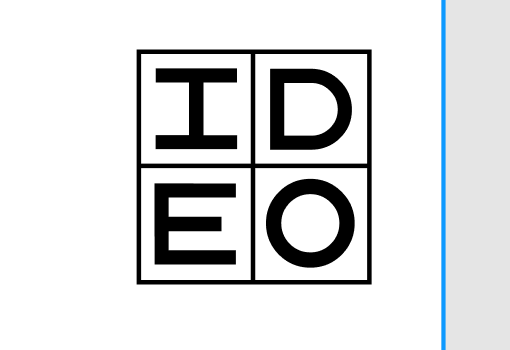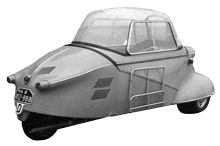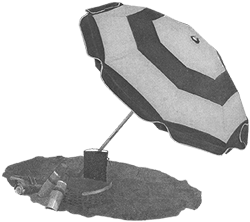Imagine this: You're playing a digital game where your only job is to move a circle across the screen. There's just one catch—you have to wait.
Wait... wait… wait. Move the circle across the line. You did it!
Now wait. Wait some more. Now wait even longer.
It’s an experiment in patience, friction, and play. The time required to wait increases, then increases again. At first, it’s a small pause — just a few seconds. But as you progress, the gaps grow longer, pushing your patience.
So what happens when waiting becomes unbearable? Well, you can add friction.
With the press of a button, obstacles appear. At first, they’re just slow-moving blocks. But crank up the friction, and they start bouncing, spinning, zig-zagging across the screen. Now, waiting isn’t the challenge — surviving the chaos is.
How much friction feels right? That’s up to you.
That’s exactly what we set out to test in our new IDEO Playable called Wait. Wait. Wait.—a micro-game about the relationship between waiting, friction, and engagement.

.png)
IDEO Playables: Experimenting Through Play
At IDEO, we often use play as a way to push the edges of deep design questions. IDEO Playables are lightweight, interactive experiments that transform abstract design principles into hands-on experiences. We believe that small moments of play—surprising constraints, unexpected rituals, or shifts in perspective—can unlock new ways of engaging with the world. Rather than just reading about an idea, we invite people to play with it.
Wait. Wait. Wait. is the first Playable in this series, investigating the question, what happens when friction is a feature, not a flaw? How does challenge shape engagement? When does it invite play, and when does it push us away?
Why Add Friction to a Game About Waiting?
We started with a simple question: What happens when waiting is the game?
The first prototype was straightforward: ✅ Move the circle. ✅ Wait for the timer. ✅ Cross the finish line. It’s an interaction that mirrors digital experiences where friction is the enemy — which these days, is most of them. Designers tend to streamline, optimize, and eliminate anything that slows users down. Adding an item to your cart with one click? That sign-up form that takes four seconds to complete? The ease of swiping on a dating app? These are just the frictionless UX equivalents of moving the circle and crossing the finish line. So easy – and so boring.
Because there was no friction, the game quickly felt dull. So we introduced ways to increase engagement through challenge:
- Friction Level 1: Slow-moving obstacles add a light challenge.
- Friction Level 5: Blocks speed up and move unpredictably.
- Friction Level 10: Obstacles bounce, shift heights, and spin.
- Rainbow Mode: A rare power-up lets players fight back, blasting obstacles with bullets.
The result? A game where players control their own level of difficulty — where friction isn’t just a challenge, but an essential ingredient of play. It forces players to make strategic decisions: Do you sit patiently, waiting out the timer? Or do you turn up the friction, trading stillness for chaos?
.png)
What We Noticed from Playtesting
When we shared Wait. Wait. Wait. with IDEOers across the globe, we weren’t sure how long people would engage. Would they play a round or two and move on? Would they crank up the friction? Would anyone wait all the way through?
Two weeks later, players had made it through 1,150 rounds—far more than we expected. And while each player approached the game differently, a few surprising patterns started to emerge:
- Players who increased friction played longer. Players who frequently collided with obstacles played an average of 107 rounds per session—nearly five times longer than the average.
- Some players lost hundreds of times—but kept going. One player lost 202 rounds before finally securing a win.
- Others played for more than 30 minutes in a single session. The most persistent players endured high-friction levels for extended periods, with one player spending nearly nine minutes at Friction 60 before making any adjustments.
- Meanwhile, players who never changed the friction level barely engaged. Most of them quit within 13 seconds.
These early patterns suggest something interesting: friction might actually be what retains players rather than driving them away.
But why? Is it the thrill of overcoming obstacles? The satisfaction of figuring something out? Or something else entirely? We don’t have all the answers yet—but what’s clear is that friction isn’t just an inconvenience. It’s doing something.
.png)
What Friction Unlocks Beyond Play
Efficiency has become the default in digital design, but our early gameplay data suggests that intentional friction creates deeper engagement.
Think about the last time you skipped a tutorial because you just wanted to “figure it out yourself.” Or when you stayed up too late trying to solve a puzzle.
Now consider how AI-driven experiences increasingly prioritize instant answers over exploration—a straight line instead of a winding path. In the Play Lab’s research on digital spaces, we’ve found that designing for pauses—whether through challenge, curiosity, or even a well-placed obstacle—can transform passive scrolling into active engagement. What would it look like to add playful friction back into learning, creativity, or even daily digital interactions? What happens when we design for discovery instead of just efficiency?
What would it look like to add playful friction back into learning, creativity, or even daily digital interactions?
Some other questions to ask yourself after playing Wait. Wait. Wait. might be…
- Where do you prefer smooth automation, and where do you enjoy the challenge of working through something yourself?
- How could a well-placed obstacle spark curiosity in an app, a tool, or a product you use daily?
- What would happen if we designed interfaces that made failure feel like an opportunity instead of a dead-end?
- Where could you play with the idea of purposeful friction in your digital product or user experience? what might that unlock for your users?
In the same way Wait. Wait. Wait. transformed waiting into an engaging challenge, how might we rethink how friction operates in game design, UX, and beyond?
Sometimes, the best way forward isn’t a straight line—it’s a carefully placed detour.
.png)
Try It Yourself
Want to experience the power of friction in play?
Click here to play Wait. Wait. Wait.
Start at zero friction. See how long you last. Then start adding obstacles and discover how much fun waiting can actually be.
We’d love to hear your thoughts! What did this game make you think about? Share your reflections through our survey or join the conversation at hello@ideoplaylab.com.
And stay tuned—Wait. Wait. Wait. is just the first of many IDEO Playables to come.
Heading 1
Heading 2
Heading 3
Heading 4
Heading 5
Heading 6
Lorem ipsum dolor sit amet, consectetur adipiscing elit, sed do eiusmod tempor incididunt ut labore et dolore magna aliqua. Ut enim ad minim veniam, quis nostrud exercitation ullamco laboris nisi ut aliquip ex ea commodo consequat. Duis aute irure dolor in reprehenderit in voluptate velit esse cillum dolore eu fugiat nulla pariatur.
Block quote
Ordered list
- Item 1
- Item 2
- Item 3
Unordered list
- Item A
- Item B
- Item C
Bold text
Emphasis
Superscript
Subscript

















.png)


